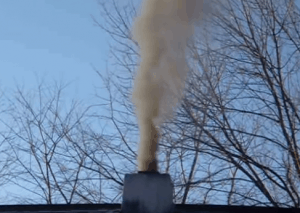 Another round of media sensation has evolved thanks to Michael Gove, the Environmental Minister with this comments when launching the recent DEFRA call for evidence on improvements to domestic solid fuel use. We did outline in a recent article the things Michael Grove was discussing around burning wood, much of which was very positive, namely encouraging people to only purchase dry, seasoned wood.
Another round of media sensation has evolved thanks to Michael Gove, the Environmental Minister with this comments when launching the recent DEFRA call for evidence on improvements to domestic solid fuel use. We did outline in a recent article the things Michael Grove was discussing around burning wood, much of which was very positive, namely encouraging people to only purchase dry, seasoned wood.
Separating fact from fiction:
However, the things outlined during the aforementioned launch where not all technically correct. For example the market for solid fuel stoves peaked a couple of years ago, and has since declined slightly. It is not continuously growing as the news reports have sugested. Also Sadiq Khan did not call for a ban of wood burners, and according to a recent Government publication emissions from urban wood burning have declined between the years of 2009 and 2015.
Revealing the truth:
With all this misreporting is there some truths? One thing, which has never been misreported is that domestic wood and coal burning contributes to the overall PM2.5 (fine particulate matter < 2.5 micron) level in the atmosphere. But the figures being estimated and widely quoted are now approaching 40% of the calculated human contribution to PM in urban areas – roughly 25% attributed to wood fuels with 15% to mineral fuel. However, actual measurements and extrapolations in wintertime for urban areas puts the figure closer to 7-10% of particles attributed to wood burning.
As we are aware, PM2.5 is strongly linked to various health problems when absorbed by the body. Another significant aspect of emissions is unburned hydrocarbons (known as OGC, partly burned fuel) in the flue gases, which are mainly from old smokey stoves and highly inefficient open fires. These compounds often form part of PM2.5 and are again linked to health damage.
Keeping things in perspective:
It is vital that these issues are kept in perspective and not blown out of proportion, which is currently happening in the media and causing undue concern on some fronts. Particulate matter is around us and in the air in our homes. The sources are both natural and man made. These levels have been getting lower for decades. According to DEFRA UK PM2.5 has fallen by more than 75% between 1970 and 2015. Sulphur dioxide by no less than 96%.
However, rates of progression in later years has slowed, and with huge improvements made in power generation and road transport the contribution from domestic wood and mineral fuel burning has actually fallen as a percentage of overall pollutant emissions – hence the sensational statistics..
Illegal burning of wood:
Extensive burning of wood goes on in smoke control areas, and in London it is estimated that 70% of total wood burning is illegal according to BEIS Domestic Wood Use Survey 2016. There is virtually no enforcement regarding this and urgently needs addressing.
 Reassuring the public:
Reassuring the public:
To help reassure the industry and the public the Government has confirmed it’s own launch press release for the new consultation that “The Government is not considering banning domestic burning, and is not seeking to prevent the use or installation of wood-burning stoves”.
Such messaging will help the wider audience in the UK to understand that modern high efficiency stoves are not polluting, inefficient heating methods.
This messaging will also pave the way for Ecodesign Ready stoves, and help ensure people realise the significant environmental benefits associated with investing in these new stoves for their homes.
You are able to view the Ecodesign Ready range from Charlton & Jenrick here – https://www.charltonandjenrick.co.uk/brands/purevision/gallery/








